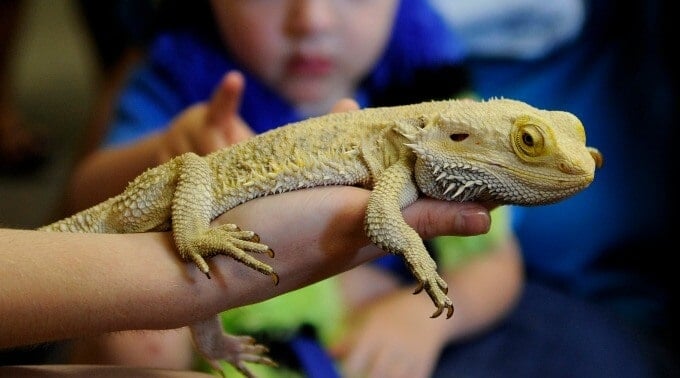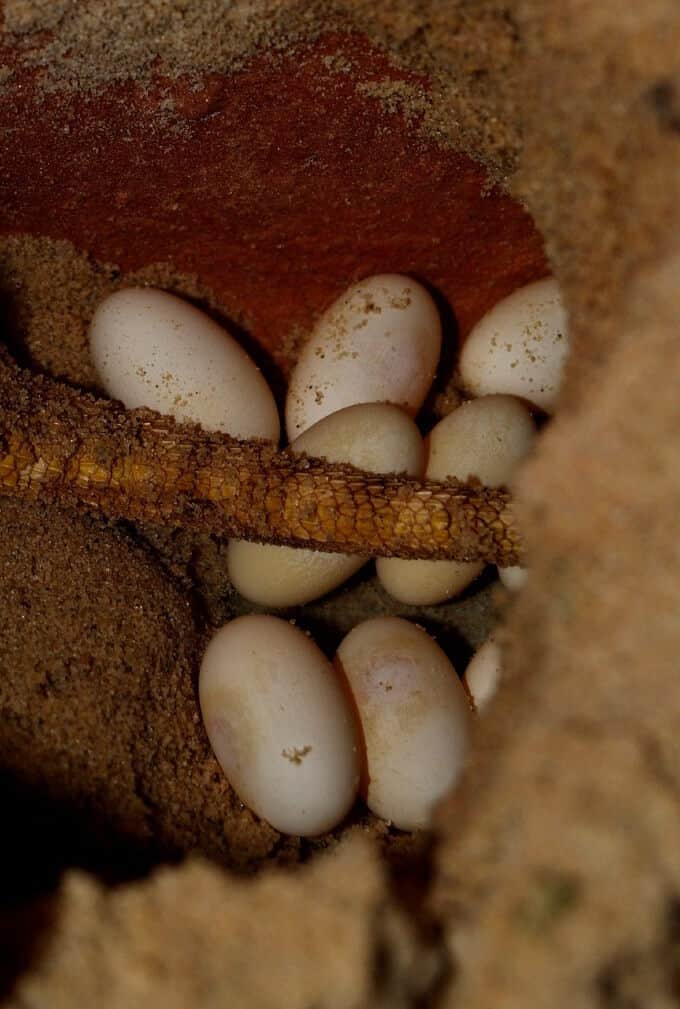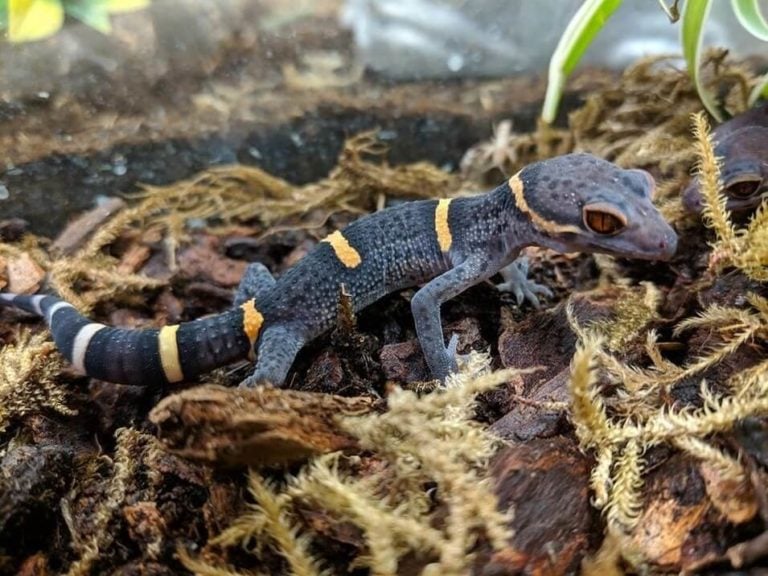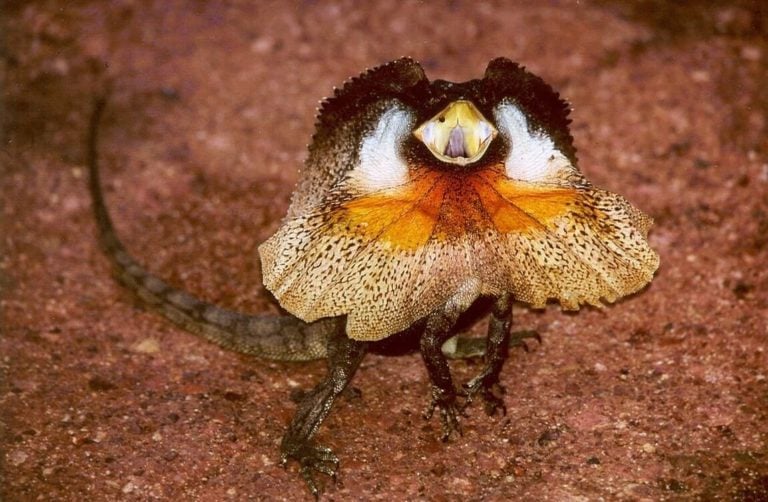Ever thought about how many babies a bearded dragon could have? Turns out, it’s more than you might think! Whether you have a pet beardie or you’re just curious about these awesome reptiles, seeing eggs in the vivarium is a big and wonderful moment.
Get ready to learn all about their egg-laying habits and what comes next.
Let’s find out.
Table of Contents
The Magic Number: How Many Eggs Does a Bearded Dragon Lay?

Bearded dragons aren’t robots – they don’t all pop out the same number of eggs every time. A typical clutch – that’s what you call a group of eggs – has usually between 15 to 35 eggs.
But, some beardies might lay a few less, and others a whole bunch more! Factors like your dragon’s age, how healthy she is, and whether she’s laid eggs before all play a part.
What Does It Mean to Be Gravid?
Let’s break down that fancy word, “gravid”. It basically means pregnant, but we use it for reptiles and other egg-laying critters. When your bearded dragon is gravid, she’s got a bunch of developing eggs inside her. You might notice some changes, like her belly getting plumper or her appetite going a little haywire.
When Do They Get Started?
You might be wondering, how old does a bearded dragon have to be to start laying eggs? Well, these gals can mature pretty fast. They sometimes start laying eggs as early as 10 months old! Of course, every beardie is different, and some might take a little longer.
Wait, No Boys Needed?
Here’s where things get kinda weird. Just like chickens, female bearded dragons can lay eggs even if they’ve never been around a male. Those eggs will be infertile, meaning they won’t hatch into baby dragons. But it’s totally normal for a solo female beardie to lay a clutch or two every so often!
Is Breeding Bearded Dragons Right for You?

Before we delve into the exciting world of baby bearded dragons, it’s crucial to consider the realities and responsibilities of breeding. Here are some key questions to ask yourself:
Understanding the Commitment
Breeding bearded dragons is far from a casual endeavor. It requires a significant investment of time, resources, and ongoing care for the parent dragons and their offspring.
You’ll need to dedicate time to proper breeding procedures, preparing incubation setups, caring for hatchlings, and potentially finding suitable homes for them. Are you prepared for this long-term commitment?
Considering the Bearded Dragon Market
The bearded dragon community is a vibrant one, but it’s also important to be realistic about the current market. Many reputable breeders are already producing healthy bearded dragons in a variety of morphs. Before breeding, research current trends and ensure you have a plan for placing your hatchlings in responsible, loving homes.
Consider connecting with local reptile rescues or bearded dragon enthusiast groups to explore potential adoption opportunities.
Ethical Breeding Practices
Responsible breeding goes beyond simply producing cute babies. It’s about prioritizing the health and well-being of your dragons throughout the process. Avoid breeding solely for rare color morphs or unique traits, as this can sometimes lead to unintended health complications in the offspring.
Focus on breeding healthy, well-tempered dragons that will thrive in their new homes. Research reputable bearded dragon breeders and genetic bloodline testing to ensure you’re producing healthy animals with a lower risk of genetic defects.
By carefully considering these factors, you can make an informed decision about whether breeding bearded dragons aligns with your resources, goals, and ethical values. Remember, responsible breeding prioritizes the well-being of the dragons above all else.
The Basics: Are Your Bearded Dragons Ready?

Okay, you’re serious about this whole baby dragon thing. But before the fireworks, let’s make sure your beardies have what it takes to be awesome parents. Here’s the checklist:
- Age Matters (It’s Not Just a Number): Think of your beardies as teenagers – they may look ready, but their bodies might not be. For healthy eggs and a strong mama, your female should be a proper adult, around two years old. Males generally mature a bit sooner, so 18 months is usually the minimum for them. Younger than that? You’re risking complications and unhealthy babies.
- Size Isn’t Everything, But It Counts: Your dragons should be full-grown, which typically means at least 18 inches long, nose to tail. Remember, a bigger, healthier female will handle egg-laying way better. A vet checkup is always a good idea, and they can weigh your dragons to make sure they’re in tip-top shape. Did you know that a healthy adult beardie can weigh close to a pound? That’s a lot of lizard!
- A Clean Bill of Health (Pre-Romance Checkup): No responsible parent wants to pass on any health issues to their babies! A pre-breeding visit to a reptile vet is essential. They’ll check for parasites and other problems that could affect fertility or the health of the hatchlings. It might sound fancy, but getting a fecal test is a must-do for any potential parent beardie.
Mating and Egg-Laying 101
Alright, you’ve got two healthy, smitten beardies. Let’s get ready for the big show (and hopefully, a bunch of adorable little eggs later!). Here’s how the process usually unfolds:
- Drama and Dragon Flirting: Bearded dragons have their own way of getting things started. Mr. Beardie might strut around with his beard puffed out and turning a striking black color. You’ll see some head bobs, maybe a bit of tail-wagging. If his lady is interested, she might wave an arm in the air – sort of the dragon version of a “come hither” gesture.
- The Main Event: The actual mating is…well, let’s just say it’s quick and to the point! The male will grab the female by the back of the neck (gentle-like, usually), and the deed is done. Honestly, it might be over before you can blink!
- Waiting for the Big Dig: About a month or so after the action, your female dragon will be feeling extra plump and will probably start digging like crazy. This means those eggs are on their way! It’s time to make sure she has a cozy nesting box. This could be a simple plastic tub filled with soft, slightly damp soil or sand where she feels safe to burrow. Did you know a female bearded dragon can lay a whopping clutch of 20+ eggs sometimes? Talk about a super mama!
Incubating Those Little Treasures

Those precious eggs hold the promise of adorable baby beardies, and it’s up to you to provide the perfect environment for them to hatch. Here’s a deeper look into the art of incubation:
- Choosing Your Weapon: Incubator Edition The incubator is your key tool for success. If you have the means, a dedicated reptile incubator is the way to go. They maintain temperatures with amazing accuracy, saving you worry and constant thermometer checks. But if you’re the DIY type, fear not! You can build an effective incubator with a bit of creativity and careful temperature monitoring. The key, whether store-bought or homemade, is consistency. Even small temperature fluctuations can harm developing embryos.
- Moisture Matters Think of incubation as less like baking and more like creating a mini-rainforest for your eggs! Humidity levels are crucial for proper development. Depending on your incubator setup, you might need to gently mist the eggs, or use a special incubation substrate like vermiculite that holds moisture well. The goal is to create a slightly humid environment, but never let those eggs get soggy. Regularly checking to ensure the conditions remain ideal is a must.
- Patience is the Ultimate Skill. Waiting for those babies to hatch will probably be the hardest part! Bearded dragon embryos take their time – sometimes up to 60 days or more. It’s tempting to want to peek inside, but resist the urge. Handling the eggs too much can cause problems. Focus on maintaining the perfect incubator environment and trust that nature will take its course. The payoff of those first little wiggles will be worth the wait.
Conclusion
Breeding bearded dragons is an exciting and rewarding adventure, but it’s definitely not one to jump into lightly! Remember, by doing your research, putting your dragons’ needs first, and approaching breeding responsibly, you’ll be setting yourself and those future baby dragons up for success.
And who knows, if you’re lucky, you might witness a mama dragon lay hundreds of eggs over her lifetime – talk about a dedicated parent!



